Continental Airlines General Office Building (1963-1982)
Introduction
Author-Uploaded Audio
Listen to a narration of this entry's description by Clio Admin.
Text-to-speech Audio
Images
The Continental Airlines General Offices, bearing the classic "Eagle" emblem, at Los Angeles International Airport as it looked when it was completed in 1963
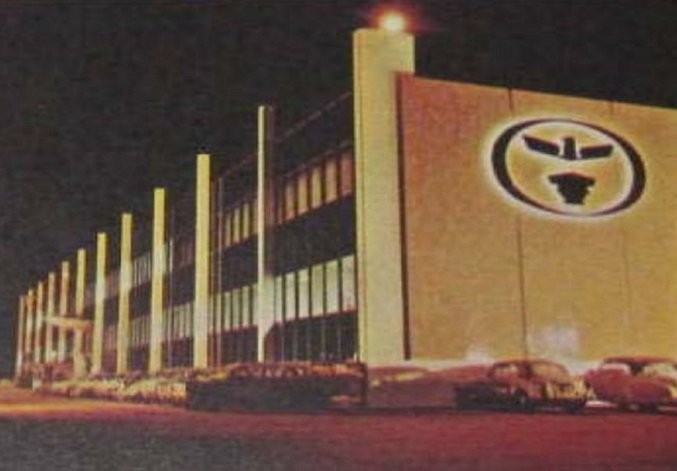
The vacant general offices building in 2016
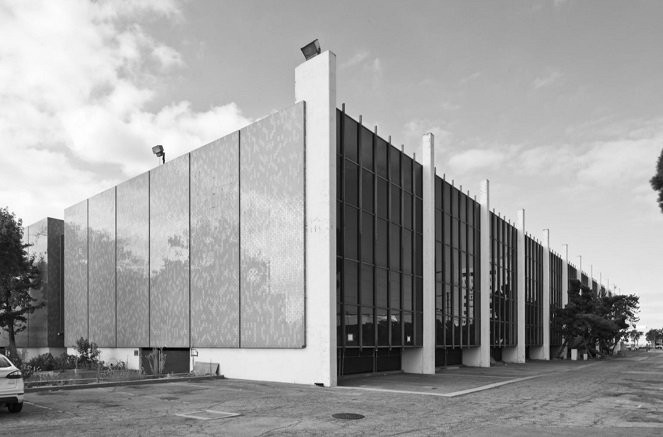
The front of the abandoned offices as it appeared in 2017
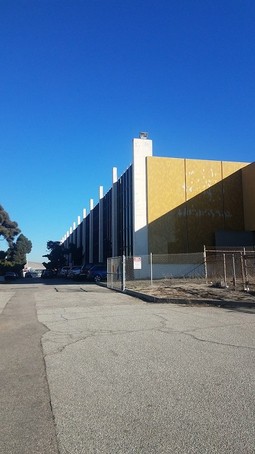
Robert F. Six, seen with Continental maintenance workers, served as president and chief executive office for over 40 years
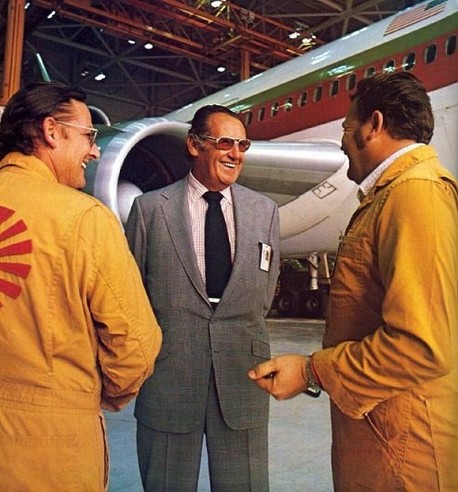
Robert F. Six with his wife, actress Audrey Meadows, and Continental Airlines flight attendants at the dedication of Continental's Boeing 747 named after Six, 1971
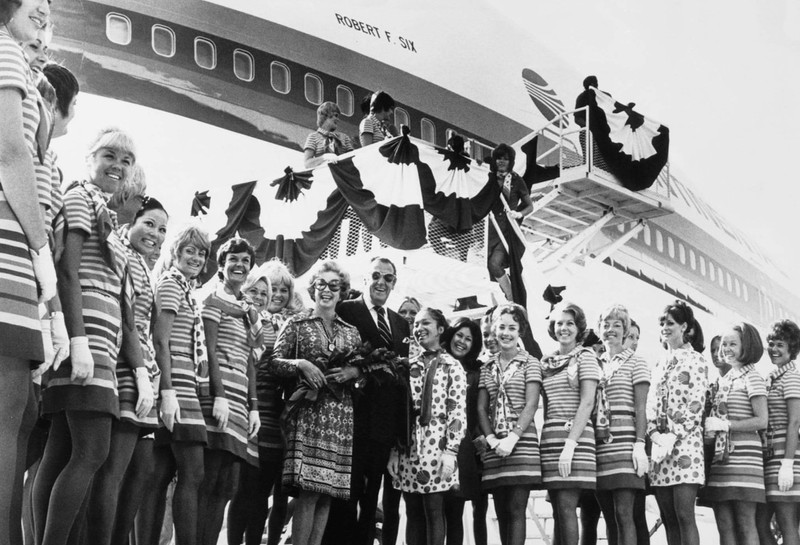
Backstory and Context
Author-Uploaded Audio
Listen to a narration of this entry's description by Clio Admin.
Text-to-speech Audio
Los Angeles in the early 1960s was a booming industrial town that big industries were flocking too, and Continental Airlines was no exception. Robert F. Six was named president of Varney Speed Lines, an airline consisting of just sixteen employees, in 1938. He changed the name to Continental Airlines and moved the airline to Denver. Over the next 25 years, Six took a three single-engine plane airline and made it one of the top airlines in the United States. By the early 1960s, Six was planning on moving the airline to the newly designed Los Angeles International Airport (LAX), which was Continental's second largest base. In addition, Six, who was married to actress Audrey Meadows, saw the social and business contacts in Los Angeles as a draw. The move proved to be smart and successful because in the first year Continental's sales increased by 20%.
The increase in sales was what covered Continental's new general offices building at LAX, which the airline paid a bargain rate of $20 per square foot, coming to a total of $2 million dollars. The mid-century modern architect Edward "Ted" Grenzbach was hired to design the 100,000 square foot office building located on 35 acres leased by Continental at LAX for 40 years. Six requested that the building not only include offices, but also the hostess and pilot training facilities. Within two years Continental had grown so exponentially a new training center was constructed on the same lot. By July 15, 1963, Six and 335 members of his executive and administrative staff made the move from Denver to Los Angeles and soon there were 1,500 Continental staff employed at the LAX headquarters.
The front of the general offices building bore a bronze canopy sculpture of artist Russell Holmes' "Free Form of Future Flight" and featured Continental's signature colors of white, gold, and Black. In addition to the 100,000 square foot office space, Grenzbach designed a 7,800 square foot cafeteria on the first level. Through the 1960s and 70s, Bob Six, along with executives and crew, turned Continental Airlines into a major transcontinental and international airline. Due to the headquarters being located in Los Angeles, Continental became the preferred airline for movie stars such as Henry Fonda and John Wayne. As the wife of the president, Audrey Meadows designed Continental's chic flight attendant uniforms in the "Swinging Sixties," as well as the interior of Boeing 747s and the DC-10.
During the 1970s, Continental continued to turn profits and expand routes, despite the recession that deeply effected other airlines. Towards the end of the decade, that picture had changed due to airline deregulation and increase in competition. In 1980, Robert Six stepped down as president and handed the position over to Alvin Feldman. The airline continued to struggle and was facing take-over by Texas Air Corporation when Feldman took his life in his office at LAX. Continental was acquired by Texas International Airlines and in 1982 the airline's headquarters moved to Houston.
By 1995, the general office building at LAX was completely vacated, with the exception of one office that continued to be occupied until 2001. The general office building that once served as base to the longest serving airline executive in aviation history and over a thousand Continental Airlines employees is now completely vacant and unsafe to occupy. The future of the building is uncertain, but the growth of Continental Airlines from a national to international carrier took place on this property during the "jet age" of aviation. Continental merged with United Airlines in 2010. The building holds a reminder of Continental- its iconic logo known as "The Proud Bird with the Golden Tail," although the logo's gold paint is vanishing.
Sources
Boyer, Edward J.. Continental Airlines Founder R. F. Six Dies. Los Angeles Times. October 07, 1986. Accessed July 13, 2018. Continental Airlines Founder R. F. Six Dies. http://articles.latimes.com/1986-10-07/news/mn-5055_1_continental-airlines
Serling, Robert J. Maverick: The story of Robert Six and Continental Airlines. First Edition. Garden City, NY. Doubleday, 1974.
"Airline Occupies New Headquarters in L.A.." Los Angeles Times (Los Angeles) September 15, 1963, J sec.
LoCascio, John. B-2 Historic Building Documentation Continental Airlines General Office Building. Accessed July 15, 2018. https://lawamediastorage.blob.core.windows.net/lawa-media-files/media-files/lawa-web/lawa-our-lax/sa....
Hollie, Pamela G. Continental Without Its Chief. New York Times. August 11, 1981. Accessed July 15, 2018. https://www.nytimes.com/1981/08/11/business/continental-without-its-chief.html.
